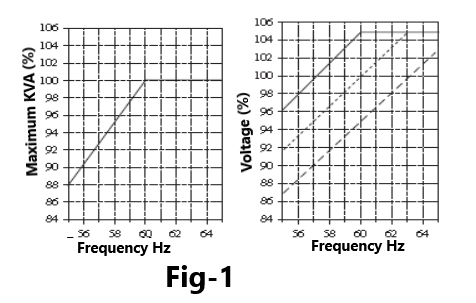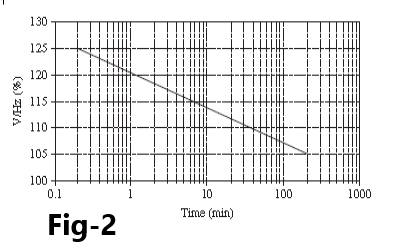First, consider the effects of sustained operation of a generator that is in an emergency island, created as a result of some system disturbance, which produces the condition that either over-or under frequency exists in the island.
Over frequency Effects
In an islanded operation where load has been lost for any reason, all generators will see this disturbance as a loss of load, which is often termed a load rejection as far as the generating unit is concerned. This will result in an increase in speed, which should be controlled rapidly by the prime mover speed governors. Assuming that the load reference settings of the speed governors are not changed, the governor “droop” setting (about 5% in North America) will determine the final change in generator speed or frequency per unit change in load. Should the over speed condition persist, the generator is usually not in a hazardous condition since generator loading is lower than normal and cooling is improved due to the increased speed.
Moreover, since load has been lost, voltages are likely to be high, resulting in reduced excitation. If the excitation is greatly reduced, the generator might be tripped by loss-of-excitation protection, depending on the sensitivity and settings of these relays. It is also possible that a unit could be tripped due to high voltage, should a voltage regulator be out of service. One-of many generator tripping may not necessarily be a serious matter since there is already too much generation in the over-frequency island, and such a trip is likely to be an isolated event.
Under frequency Effects
Permissible time (s) | Stator limit in per unit of rated current | Rotor limit in per unit of rotor current (field) |
120 | 1.15 | 1.13 |
60 | 1.27 | 1.25 |
30 | 1.50 | 1.46 |
10 | 2.18 | 2.09 |
In an under frequency island the reverse of the aforementioned conditions will prevail. Here, the generators are all overloaded and the speed, and hence cooling, is below normal. Because of the overload conditions, system voltages are likely to be low, causing generator excitations to be increased, perhaps to their limits. This raises the possibility of thermal overload of both the stator and the rotor. The possibility exists for unit trip due to stator overheating, rotor overheating, over excitation, and under frequency (V/Hz). Moreover, the entire island is short of generation and a trip of any unit could start a cascading of unit trips and a rapid deterioration of the island to a complete blackout condition.
Therefore, it is very important that the protection not be overly sensitive and initiate unit trips unless absolutely necessary. Through their evolving revisions, the IEEE/ANSI standards have provided guidelines regarding the short-time thermal capability required of steam turbine generators, as shown in Table-1. These values are based on a constant increment of heat added and can be extended to other values of time by the expression.
(x2− 1)t = K
where
x = per unit value of stator current or field voltage
K = a constant
≈ 41 for the stator
≈ 33 for the rotor


It is important that some protection be provided to protect the generator from exceeding the limits imposed by Table-1. Most modern voltage regulators provide over excitation limiting that will reduce the excitation voltage to a safe value after an appropriate time delay. This voltage reduction may also reduce the stator current, but the stator current overload is system dependent and voltage reduction cannot be relied on for stator protection.
For generator continuous operating times exceeding those shown in the table some limitation must be applied, as either a reduction in MVA to reduce the current or a reduction in voltage to reduce the volts/hertz and counteract the excess flux due to low frequency. Appropriate limitations are shown in Figure-1.
To satisfy the volts per hertz limitations, the voltage of the generator can be reduced in the same proportion as the frequency reduction to return to normal flux conditions. This may also reduce the volt-ampere loading to acceptable values, but there is no assurance that this will be the case.
Also, some manufacturers publish a time limitation for the volts per hertz criterion, as shown in Figure-2. The protection trip time must be adjusted to honor these time restrictions. The protection of the generator against over- and under frequency conditions does not require any specific additions to the protective systems discussed previously. The primary difference here is one of protecting the generator from unnecessary loss of life rather than the removal of a faulted generator from the system. This same philosophy extends to the protection of the turbine, which, in some cases, could be severely affected by off-normal frequency. The effects and protection measures are the subject of the Sections.
